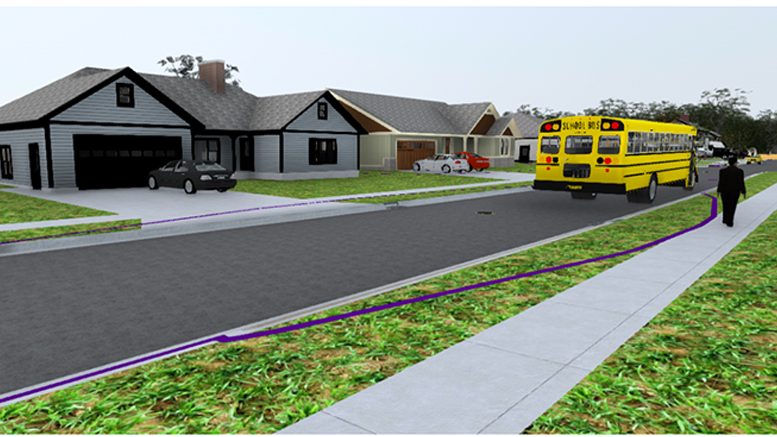Editor’s note: This is the first of a three part series on housing in Muncie and Delaware County.
By Steve Slavin and John Fallon—
MUNCIE, IN—The term ‘housing bubble’ is often used to describe rapid increases in real estate prices and demand within a context of limited supply. This figure of speech is prominent in the media and shows up as the housing market ebbs and flows over time. And while the notion rolls off the tongue with ease, it is likely not well understood by many. We suggest a more appropriate local notion along these lines is the needle. Indeed, most people are familiar with this term to describe a situation as a basis upon which to consider moving that needle in some different direction.
The housing needle in Muncie is largely stuck in place. This situation is anything but new. It has persisted for quite some time and can be considered an obstacle to the continuing development of our community. Many local folks, including us, believe strongly that we need to move this needle. And there is some urgency associated with this. While there are many reasons for this view, there are three that are both primary and prominent.
- WE DON’T HAVE ENOUGH HOUSING
Consider these housing dynamics.
- Year-over-year home listings (-11.8%) and sales (-13.8%) are decreasing based on data from the Indiana Association of Realtors for the period January-September 2021 and 2022. More broadly, according to data from Coldwell Banker Real Estate Group, active listings decreased from 459 in 2015 to 75 in 2021. At present, there are 88 active listings.
- The local housing absorption rate, the period between home listing and sale, decreased from about 10 months in 2007 to 1 month in 2022. According to the National Association of Realtors, a six-month absorption rate represents a healthy market.
- A survey of prominent local community leaders rated housing affordability and quality relatively high and considered availability quite low.
- At the county’s two largest employers, 34% and 53% of their respective workforces live outside of Delaware County.
- Our community has plenty of apartments aimed at the student market yet remarkably few that could be considered “workforce housing.”
- On 8/1/22, 100% of the condominium units in Delaware County were occupied.
While there is an increasing need for housing for folks aged 55 and older, the most acute housing shortages exist in the single-family homes and condominiums. One prominent local real estate broker has mentioned repeatedly that he could sell “…an additional sixty condos right now if they were available.”
We need more housing. We need to move the needle.
- OUR EXISTING HOUSING STOCK IS INADEQUATE
The housing stock in the city is old. According to the US Census, about half of the local residential structures were built prior to 1960 and less than 8% were built since the year 2000. Further, in its most recent long-range plan, the Delaware-Muncie Metropolitan Plan Commission mentions that one in four existing homes in the county shows signs of disinvestment and this is expected to worsen in the future.
The large inventory of distressed properties gives rise to an unusually high housing vacancy rate. The Muncie Land Bank, in its 2021 strategic plan, indicates that while a healthy vacancy rate is in the 5-7% range, our city’s rate is 16%. The plan puts this in perspective as follows.
Rates in Muncie and Delaware County are well above healthy levels and correlate with stagnant home values, high levels of disinvestment, and declining conditions. Many vacant properties are not desirable or marketable to households that have options. To a prospective home buyer or renter, persistently high vacancy rates will be experienced – counterintuitively – as a shortage of appealing options.
We need better housing. We need to move the needle.
- OUR HOUSING SITUATION HAS EMERGED AS AN ACUTE WORKFORCE OBSTACLE
There is a clear relationship between housing and employment. Indeed, local workforce dynamics reinforce the need for more and better housing.
- Virtually all the county’s largest employers forecast employment growth in the years immediately ahead.
- New employers are locating in Delaware County and there have been recent announcements of additional company locations here.
- Commuter profiles indicate that more than 10,000 workers commute to work in Delaware County while about 7,000 local residents commute to work outside the county.
- According to Stephen Brand, General Manager at Magna Powertrain Muncie, “hiring close to our division is crucial to retaining and keeping those employees engaged. If we hire people outside of our community, they are more likely to leave if they can find a job closer to their home. We are committed to building up our people and our community together and believe hiring where we’re located is best.”
We need to understand that our housing is hard-wired to our local economy. We need to move the needle.
So, what do we do about this? How can we move the needle? One way is to commission a city-wide, high-level blue-ribbon housing development task force to develop an aggressive plan for more and better housing. Ideally, this body would include the very best local home builders, realtors, bankers, mortgage company representatives, government officials, researchers, appraisers, and community leaders. And it would be charged with not only developing specific strategies for new housing, but with oversight of the development process as well.
Our housing needle is stuck and we need to move it. We have the resources and expertise to do it: we can do this. Until we do, our community will miss many and varied opportunities for future growth and development.
Steve Slavin, GRI, is the Manager of the Coldwell Banker Real Estate Group in Muncie and Dr. John A. Fallon, III is Managing Principal at FALLON + Associates LLC



